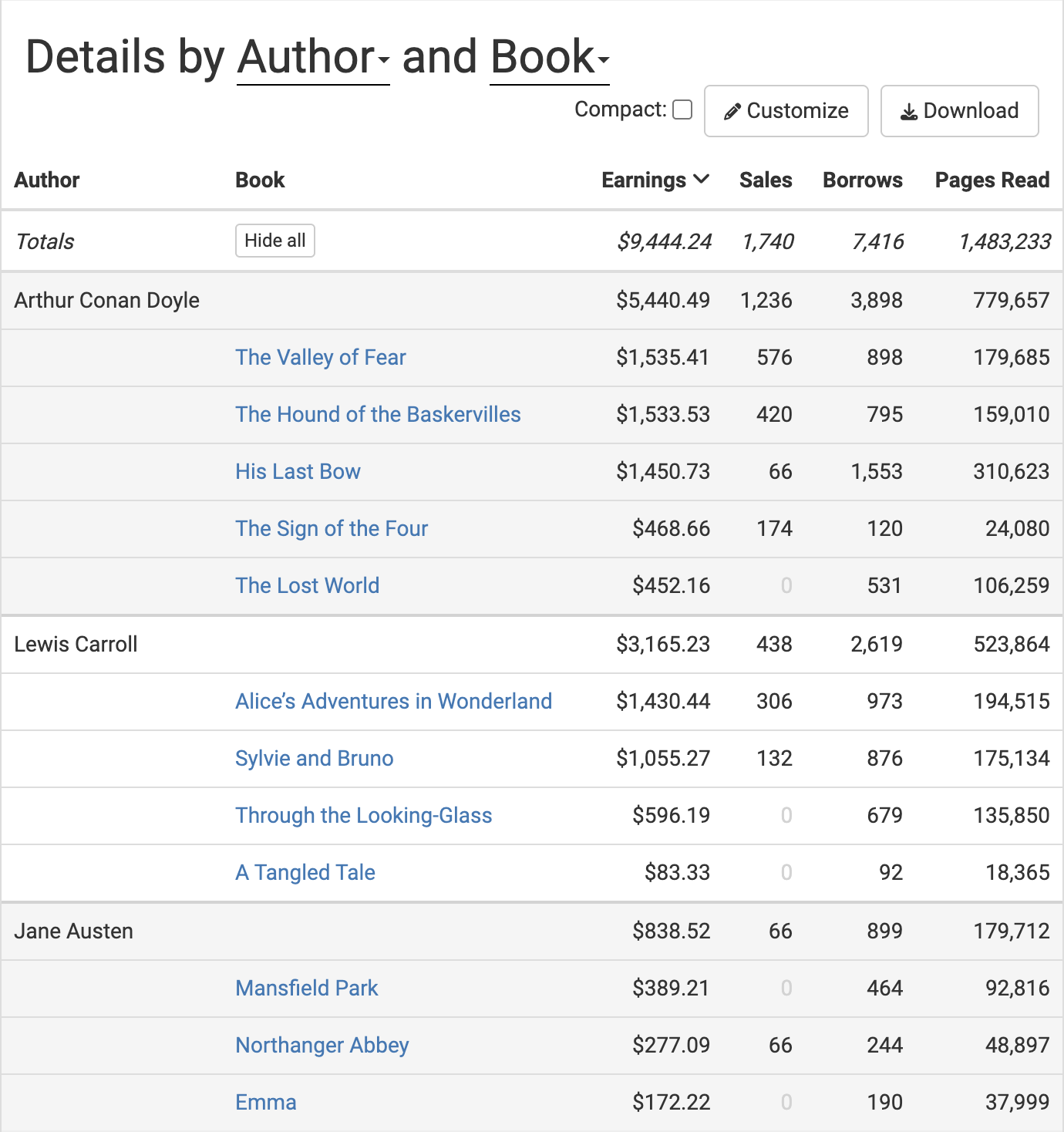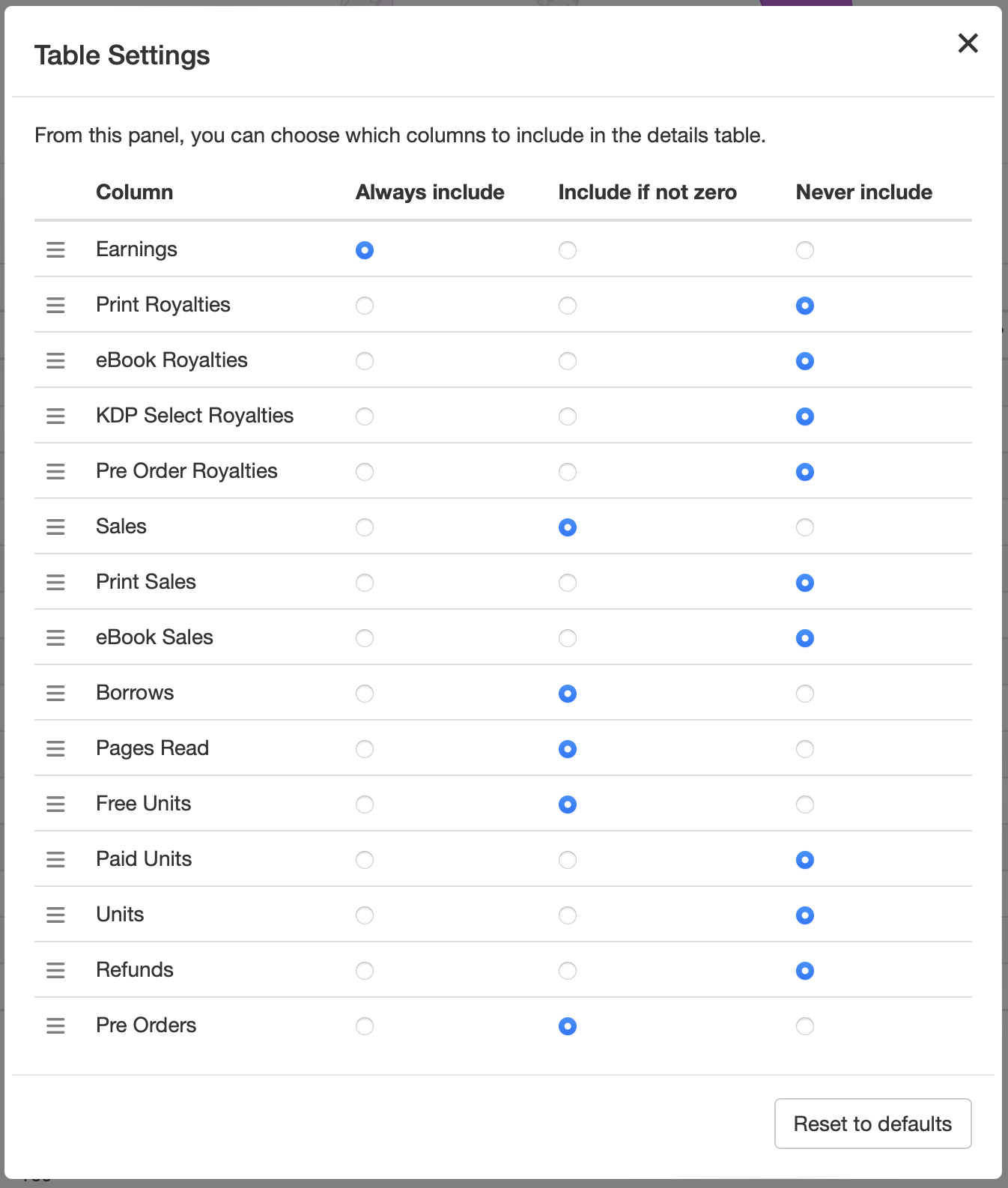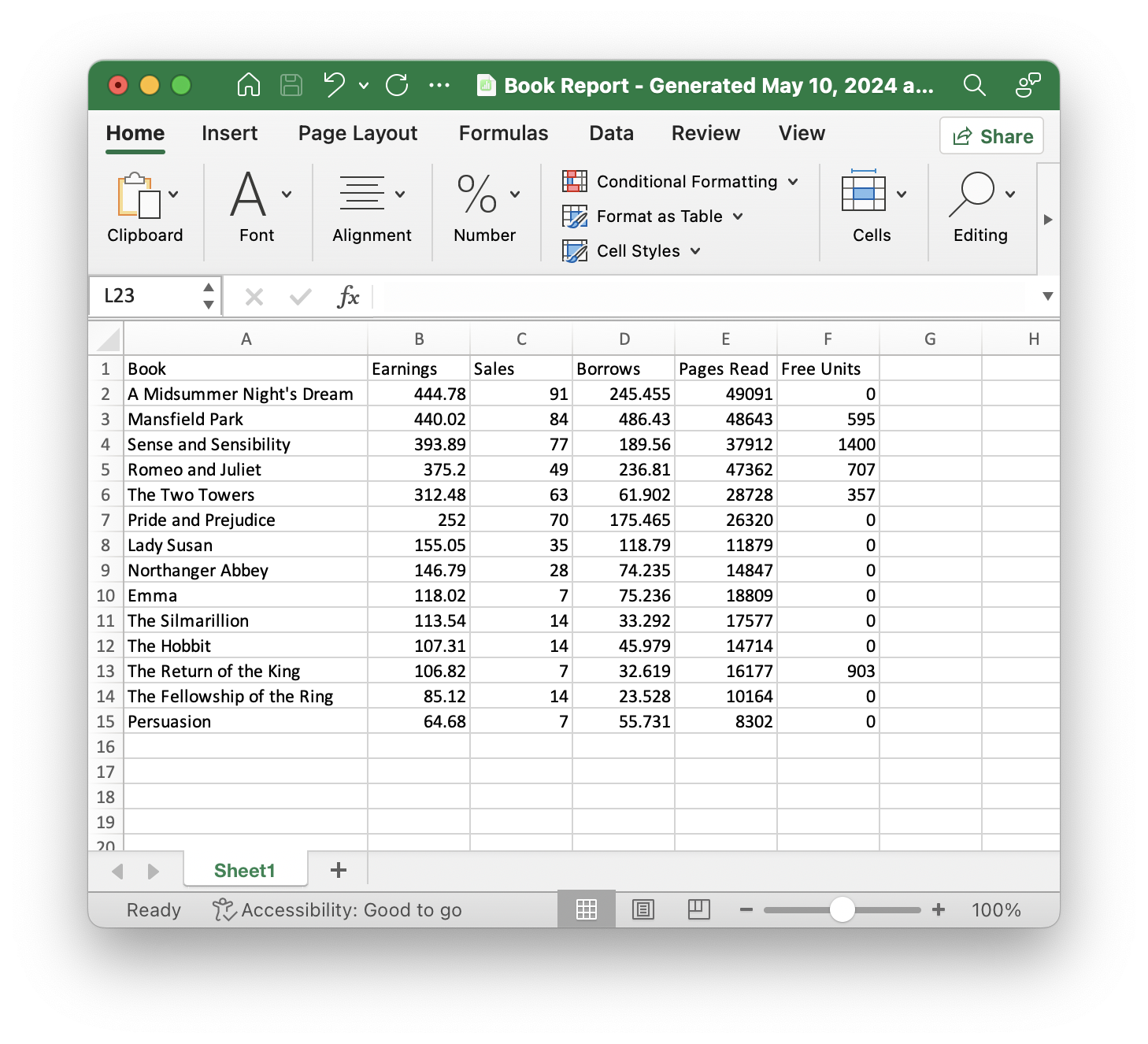Tables
Tables are a great way to get granular on your data. Here's an example of a table:

You can click where it says "Book" at the top to choose any other attribute you'd like to see in the table. Common choices are "Author", "Series", "Transaction Type", and "Publication Year". Whatever you choose, each row of the table will represent each unique value of that attribute.
By default the table is sorted by earnings, but you can click the column headers to sort by any other metric.
Adding a Second Attribute
To add a second attribute to a table, click the "+" button.

Once you've added a second attribute, you'll see your data broken down by the first attribute, then further by the second attribute. In effect this is a way to see multiple tables at once - for every "first attribute" value, you'll see a nested table of the "second attribute" values.

This is a great way to see how your data is performing at multiple levels of granularity.
Compact
The "Compact" checkmark changes the styling of the table to be more compact and scannable. The features of the compact table are:
- Shorter rows.
- Truncated titles.
- Zeroes are faded.
- Each row stays on one line.
Customization
You can click the "Customize" button at the top right of the table, where you can select which columns you'd like:

Every metric available in Book Report is available to add to the table. You can also drag-and-drop the columns to reorder them.
There are three options available for each metric:
- Always include: These columns will always be shown in the table.
- Include if not zero: These columns will only be shown if there is data to display.
- Never include: These columns will never be shown in the table.
Feel free to play around with these as much as you'd like - you can always click "Reset to defaults" to get back to where you started.
Download
The download button will download the table as a CSV file. This file can be opened in any spreadsheet program, like Excel or Google Sheets.

If you find yourself regularly downloading the table to do further analysis, please send me an email! I would love to hear what you're doing with the data and how I can make it easier for you.